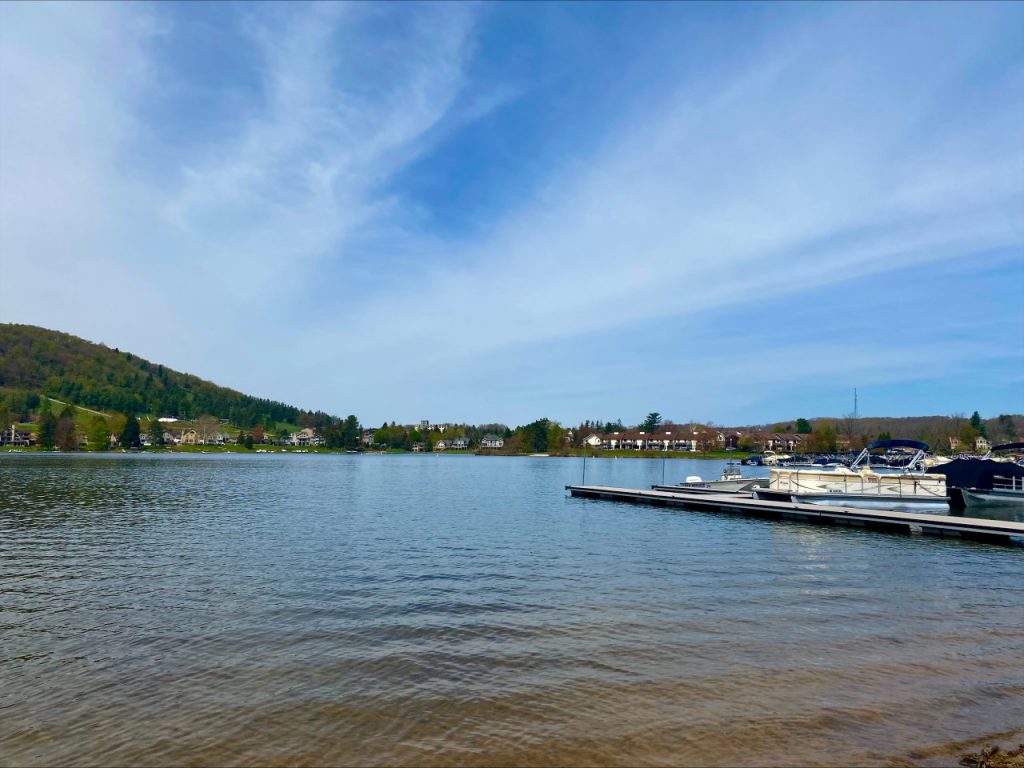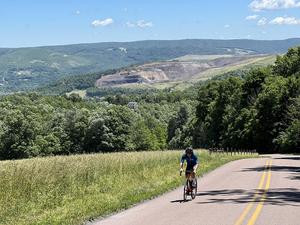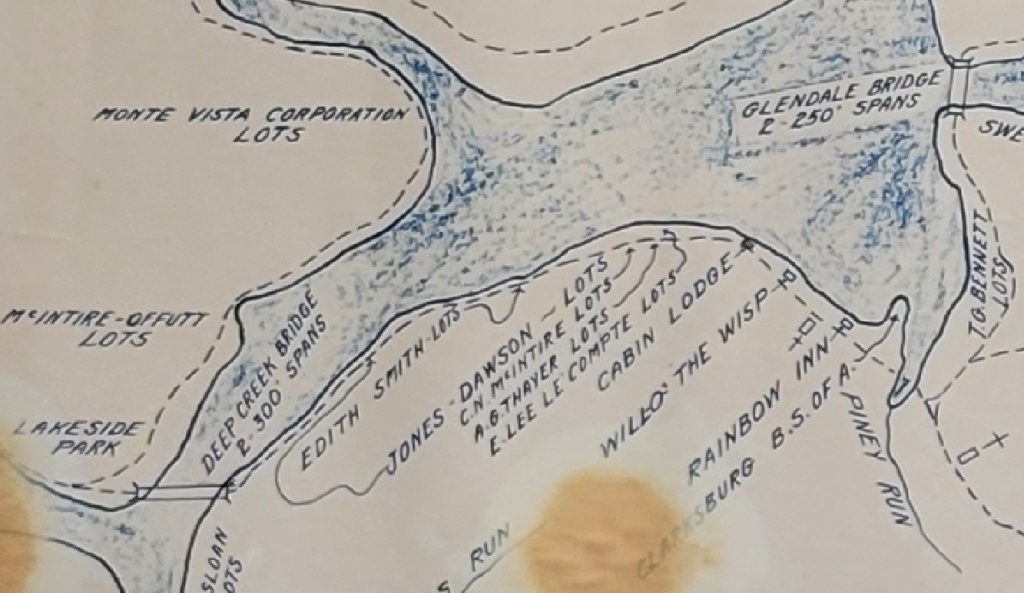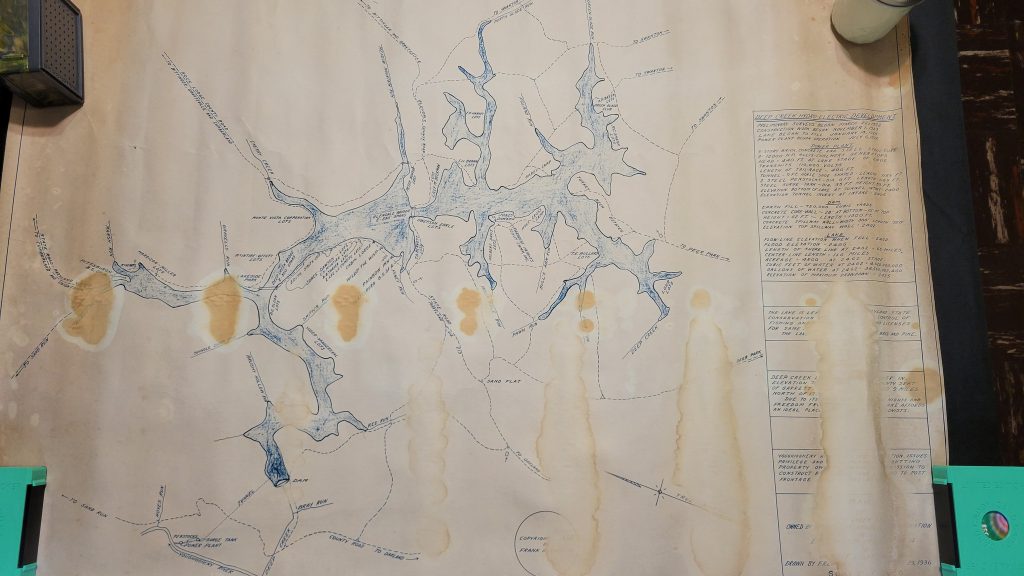Tag: deep creek
The Best Things to Do in Deep Creek Lake, Maryland
Deep Creek Lake State Park is an idyllic spot to launch a boat. Wisp Resort operates a rental kiosk on the park’s public beach for kayaks, canoes, paddleboards, and beach chairs.
Want to take paddling to the next level? Wisp has a 1,700-foot recirculating whitewater course on the top of the mountain, for gentler rapids than some on the nearby Youghiogheny River. Guides help rafts and kayaks maneuver the rock-lined loop. You can ride the ski chairlift to get to the course, taking in mountain and lake views.
Drop the paddle and start a motor at Lake Life Rentals in McHenry. The outfitter issues temporary boating licenses so you can steer pontoons with cushioned seats and a canopy for sun coverage. (Seafaring dogs are allowed.) For an additional fee, rent tubes to strap on the back of the boat.
The placid water makes the lake an ideal spot to learn how to waterski and wakeboard. Book a session with Rouse Water Sports, departing from the Deep Creek Marina Club. Greg Rouse, a waterski instructor with more than 30 years’ experience, uses a training boom—a bar that extends from the boat onto the water—for a beginner-friendly lesson. Start with waterskis, or if you’re more advanced, try barefoot skiing.
Beyond the lake, there are hikes that take you by local waterways. To learn more about the area’s ecology, reserve a spot on a river walk led by All Earth Eco Tours. Stroll along the Youghiogheny River while a guide points out plants and animals. After a mile walk upstream, the tour stops at a swimming hole for downtime in the water.
Stop at Firefly Farms Market to stock up on Maryland-made cheese, cured meats, and crackers. At the cafe, the farm’s cow’s- and goat’s-milk cheeses are folded into cheffy sandwiches. West Virginia’s Mountain State Brewing Company has an outpost in McHenry for pub fare, flatbread pizzas, and cold beers. The back patio often hosts live music in summer. For a sweet treat by the water, grab a cone from Lakeside Creamery or, to customize your confection, pick a glaze and toppings at Deep Creek Donuts.
for more The Best Things to Do in Deep Creek Lake, Maryland (washingtonian.com)

Deep Creek Farmers Market season begins
The Deep Creek Farmers Market is a community event that promotes a wholesome, social gathering place in our area showcasing the rich agricultural heritage, local craftspersons, and unique small businesses of the area. Visit food vendors, craftors, live bands, and more! The Mission of this market is to serve all Garrett County residents and visitors alike, and specifically the Deep Creek Lake/Northern Garrett County region. There are inherent benefits for the consumer, producer, and community where food is grown, purchased, and consumed locally. They strive to improve the variety, taste, and freshness of products available to consumers in our area. The Farmers Market is open every friday during the summer season from 3-6pm between the fairgrounds and the college parking lot. visit Deep Creek Farmers Market – “Grow, nourish, and inspire community” for more information


Bobcat Academy gives students immersive college experience
Frostburg State University will be hosting students from both Allegany and Garrett Counties in a Dual Enrollment Pilot program next fall. The Bobcat Academy will give students an immersive college experience and an opportunity to earn college credits while completing their senior year of high school. Dr. Kim Green-Kalbaugh, Chief Academic Officer for Allegany County, spoke about the academy at this month’s school board meeting. Garrett County schools will have open house events on May 19th and 30th for students and parents interested in the Bobcat Academy.
for more information Bobcat Academy gives students immersive college experience | WCBC (wcbcradio.com)

WVU Band to march at 56th Autumn Glory Parade
The West Virginia Marching Band will be preforming at the 56th annual Autumn Glory Parade October 11-15 in downtown Oakland.

Garrett County Gran Fondo - Ride Through the Scenic Wonders of Mountain Maryland
Get ready for a wild ride through the scenic wonders of the Deep Creek Lake area and mountain Maryland. The 12th annual Garrett County Gran Fondo is now accepting registrations and is proudly presented by the Garrett Trails Organization
MCHENRY, MD, May 05, 2023 /24-7PressRelease/ — Whether you’re a casual cyclist or an experienced athlete, this challenging ride is guaranteed to offer a once-in-a-lifetime experience. From the stunning views of the mountains to the vibrant culture at each stop, riders will get to experience all that mountain Maryland has to offer. Not only that, riders can rest assured knowing that their efforts will be put to good use in supporting local trail initiatives led by the Garrett Trails Organization.
Garrett County, Maryland is renowned for its breathtaking scenery and unique outdoor experiences. On Saturday, June 17th, 2023, cyclists from all over the country will have a chance to take in the beauty and majesty of this region with the Garrett County Gran Fondo cycling event.
This challenging ride will take riders on a 25 -125-mile route through some of the most picturesque spots in mountain Maryland. Along the way, riders will get to experience some of Garrett County’s best attractions such as Deep Creek Lake and the scenic Youghiogheny River.

First Deep Creek Lake Visitors Map
The first Deep Creek Lake visitor’s map?
This 1936 map was made by Frank Corliss, who was in charge of the surveying for the original land acquisition of the lake. Labeled with roads, the businesses along the “strip” on 219 and lot owners, along with the factoid info on the right, it looks a lot like a visitor’s map to me.
Lots of cool details and info on here – stuff that’s long gone and some things that are still here.
For more info on the map, Frank Corliss and a downloadable bigger version, head over to Chris Nichols website: https://dimesy.com/…/the-first-visitors-map-of-deep…/


Garrett County Diversity and Inclusion Committee Meeting Scheduled
The Garrett County Diversity and Inclusion Committee is having a meeting on Wednesday, April 19, 2023 from 3 PM until 4:30 PM at Garrett College in the Offutt STEM Building in Room 211.









